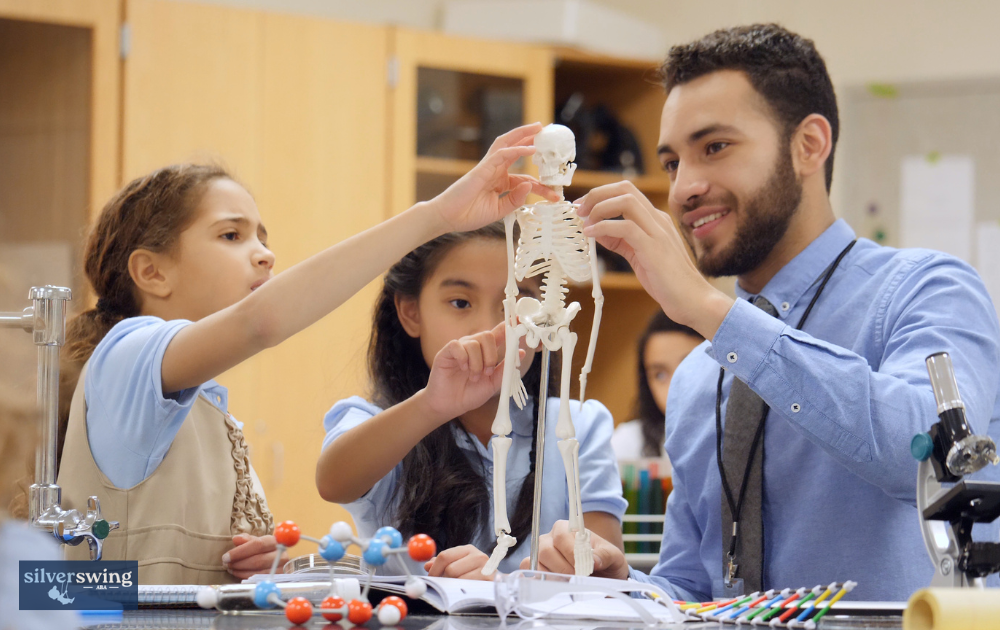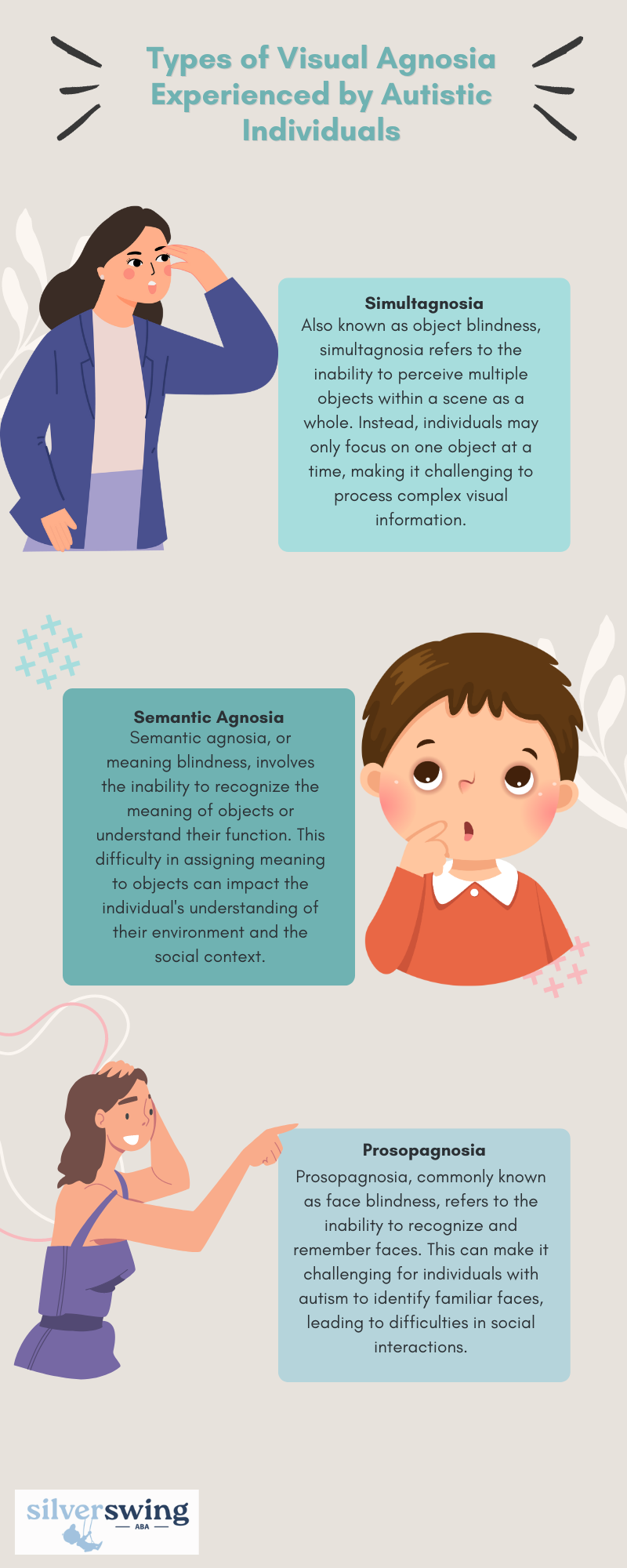Understanding how people on the autism spectrum perceive and process the world around them is crucial for fostering inclusivity and effective support strategies.
One aspect that has garnered significant attention is the visual processing capabilities of individuals with Autism Spectrum Disorder (ASD). Are people on the autism spectrum inherently more visual in their cognitive processes?
This question touches on a complex interplay of neurological, psychological, and developmental factors. Let’s find out more about this topic.

The Neurological Basis of Visual Processing in ASD
At the core of understanding visual processing in individuals with ASD is the brain’s anatomy and function.
Neuroimaging studies have revealed that people with ASD often exhibit differences in brain regions associated with visual processing.
The key areas include the occipital lobe, which is responsible for visual perception, and the parietal lobe, which is involved in spatial orientation and integrating sensory information.
Research using functional Magnetic Resonance Imaging (fMRI) and Diffusion Tensor Imaging (DTI) has shown that these brain regions may be more active or differently wired in individuals with ASD.
For instance, a study by Kana et al. found that children with ASD have atypical connectivity between the occipital lobe and other brain regions. This suggests that they might process visual information differently from neurotypical individuals.
Types of Visual Agnosia
Visual agnosia refers to a condition in which there is difficulty in recognizing and interpreting visual stimuli. In the context of autism, individuals may experience different types of visual agnosia such as:

Visual perception abnormalities in autism can impact object recognition, which is the ability to identify and categorize objects based on their visual appearance. These abnormalities may enhance difficulties in dealing with complex social stimuli while also improving outstanding abilities in certain visual domains.
For example, individuals with Savant syndrome, a condition sometimes associated with autism, may demonstrate exceptional visual memory or 3-D drawing skills.
Furthermore, individuals with autism often exhibit a preference for local details over global stimuli. This means they have a tendency to focus on specific details of visual information rather than perceiving the whole picture.
While this may present challenges in certain situations, it can also lead to remarkable attention to detail in specific areas of interest.

Challenges with Face Identification
One of the notable difficulties individuals with autism face is in the area of face identification.
Dynamic face processing, which involves perceiving and interpreting facial expressions and social cues, can be particularly challenging.
According to research, individuals with autism exhibit reduced activity and modulation in regions such as the amygdala, fusiform gyrus, and superior temporal sulcus (STS) when processing dynamic faces.
Interestingly, studies suggest that while individuals with autism may struggle with cortical high spatial frequency (HSF) face processing, they often demonstrate preserved subcortical low spatial frequency (LSF) face processing.
This discrepancy suggests that individuals with autism may rely more on global face features rather than fine-grained details when identifying and recognizing faces.

Sensory Processing in Autism
Individuals with autism spectrum disorder (ASD) often experience differences in sensory processing, and this includes visual perception.
In this section, we’ll look at visual defensiveness, color preferences, and light sensitivity commonly observed in individuals on the autism spectrum.
Visual Defensiveness
Visual defensiveness is a common issue experienced by individuals with ASD. It refers to hypersensitivity to visual stimulation, which can be overwhelming and confusing.
Excessive visual input can lead individuals to turn away from or avoid overstimulating visual stimuli. This defensiveness may manifest as covering their eyes, looking away, or seeking a visually calmer environment.
By recognizing and understanding this sensitivity, caregivers can provide appropriate support to minimize distress.
Color Preferences
Individuals with ASD may exhibit color preferences, often intentionally avoiding certain colors while gravitating toward others. These preferences can extend beyond visual stimuli and impact other aspects of their lives, such as food choices and toy selection.
It’s important to note that color preferences can vary among individuals with ASD, and it’s essential to respect and accommodate their preferences whenever possible.
Light Sensitivity
Light sensitivity, also known as photophobia, is another sensory challenge commonly experienced by individuals on the autism spectrum. Children and adults with ASD may have a preference for incandescent light over fluorescent light.
This preference stems from their ability to observe the flickering of fluorescent bulbs, which is nearly imperceptible to others. The flickering and harshness of fluorescent lights can be visually overwhelming and distressing for individuals with ASD.
Adjusting the lighting in their environment to reduce fluorescent light exposure can help create a more comfortable and supportive space.
Research suggests that sensory abnormalities, including visual processing differences, are closely related to social impairments in individuals with ASD. Understanding and addressing these sensory challenges can contribute to a more inclusive and supportive environment for individuals on the autism spectrum.

Visual Thinking in Autism
Understanding the unique cognitive processes of individuals on the autism spectrum is crucial in providing effective support and education.
One aspect that has garnered attention is visual thinking, which refers to the tendency for autistic individuals to process information in a visual and spatial manner.
Temple Grandin, who is a renowned engineer and self-advocate diagnosed with autism, played a significant role in popularizing the idea that autistic individuals are visual thinkers.
She famously stated that she “thinks in pictures” rather than in words. This different mode of thinking can present challenges in certain areas, such as conversation, but offers distinct advantages in fields that require visual problem-solving, like engineering.
Grandin’s experiences have shed light on the cognitive strengths of individuals on the autism spectrum, highlighting the importance of recognizing and harnessing their visual thinking abilities.
Building upon Grandin’s insights, it is logical to conclude that individuals with autism are often visual learners. Many autistic individuals excel in tasks that involve puzzles, organizing objects, and remembering routes, showcasing their visual-spatial intelligence.
This form of intelligence refers to the ability to judge spatial relationships and visualize concepts in the mind’s eye.
By recognizing and capitalizing on this visual learning style, educators and caregivers can tailor their teaching methods to better suit the needs of autistic individuals.
This is where visual tools, cues, and demonstrations can come in handy as they can enhance comprehension and engagement, thus making the learning experience more effective and accessible.

Benefits of Visual Tools
Visual tools play a vital role in supporting individuals with autism in various aspects of their lives. These tools enable individuals to understand information without solely relying on spoken words, facilitating communication and comprehension.
Visuals can be particularly beneficial for those with limited language skills, allowing them to express themselves and interact with others.
Moreover, visual supports aid in structuring daily routines and activities. Visual schedules provide a clear visual representation of tasks and their sequence, helping individuals with autism navigate their daily lives with greater independence and predictability.
Visual timers can assist in managing time and transitioning between activities, reducing anxiety and promoting smoother transitions.
The use of visual tools extends beyond educational settings. In social situations, visual supports such as social stories or visual cues can aid in understanding social norms, emotions, and appropriate behaviors.
By incorporating visual tools into various aspects of life, individuals with autism can enhance their communication skills, improve their understanding of the world around them, and increase their independence.

Practical Visual Supports
As mentioned, visual tools play a crucial role in enhancing their understanding, communication, and daily routines. They provide visual cues and aids that make information more accessible and comprehensible.
Here, we’ll look at three practical visual supports that parents and caregivers can use.
Visual Schedules
Autistic individuals often have a preference for routines and struggle with unexpected changes. Visual schedules can be incredibly beneficial as they provide a clear visual representation of the day’s activities, making routines easier to predict and follow.
By using visual schedules, individuals with autism can have a better understanding of the sequence of events, reducing anxiety and promoting independence.
Visual schedules can be created using pictures, symbols, or written words, depending on the individual’s communication skills and preferences. These schedules can be displayed in a variety of formats, such as on a wall, on a tablet or computer, or in a portable visual schedule book.
The flexibility of visual schedules allows for customization and adaptation based on the individual’s needs and abilities.
Visual Timers
Understanding and managing time can be challenging for many individuals with autism. Visual timers are valuable tools that help them observe and respond to the passage of time.
One popular example is the “Time Timer,” which features a visual representation of elapsed time. As time passes, a colored portion of the timer gradually disappears, providing a clear visual indication of the remaining time.
Visual timers assist autistic individuals in various activities, such as transitioning between tasks, completing assignments, or managing waiting times. By using visual timers, they can develop a better sense of time and improve their time management skills.
This visual support promotes independence and reduces stress associated with time-related challenges.
Visuals for Communication
Communication can be a significant challenge for individuals on the autism spectrum, as many struggle with spoken language.
In this case, visuals offer an alternative and effective means of communication. Visual supports, such as picture exchange systems, communication boards, or visual symbol charts, enable individuals with limited language skills to express their needs, preferences, and thoughts.
Visual communication tools can be personalized to match the individual’s communication abilities and vocabulary. They can include pictures, symbols, or written words, depending on the individual’s level of literacy.
By using visuals for communication, autistic individuals can effectively express themselves, enhance social interactions, and bridge the communication gap.

Cognitive Differences in Visual Processing
As far as visual processing is concerned, individuals on the autism spectrum often demonstrate unique cognitive differences. These differences can impact various aspects of visual perception and information processing.
One of the cognitive differences observed in individuals with autism is enhanced visual detection abilities. Research has shown that individuals with ASD excel in focusing on local single details while suppressing the urge to perceive global stimuli.
This means that they tend to pay more attention to specific elements or features of a visual scene rather than the overall context.
Neuroimaging studies using visual detection tasks have revealed that individuals with ASD activate posterior brain regions more extensively, such as the primary visual cortex (V1) and extrastriate cortex. At the same time, they show less activity in frontal regions compared to typically developing individuals.
This enhanced visual detection may contribute to the heightened attention to detail often seen in individuals with ASD.
Aside from that, individuals with ASD also exhibit a cognitive preference for local stimuli processing over global stimuli processing. Local processing refers to the ability to focus on specific details or components of a visual scene, while global processing involves perceiving the overall gestalt or big picture.
Studies have shown that individuals with ASD have a tendency to prioritize local processing, which can impact their perception and interpretation of visual information. This preference for local details may contribute to their attention to specific elements and their ability to detect finer patterns or discrepancies in visual stimuli.
Face Processing Abnormalities
Face processing abnormalities are commonly observed in individuals with ASD as well. Difficulties in dynamic face processing, specifically, have been identified. Dynamic faces refer to facial expressions and movements, which play a crucial role in social interactions and communication.
Research has indicated that individuals with ASD exhibit reduced positive modulation of activities by dynamic faces in regions such as the amygdala, fusiform gyrus, and superior temporal sulcus (STS). These brain regions are associated with processing social information.
The abnormalities in these social brain regions may negatively impact the ability of individuals with ASD to accurately perceive and interpret dynamic facial expressions.
Additionally, studies have suggested that individuals with ASD have preserved subcortical low spatial frequency (LSF) face processing but abnormal cortical high spatial frequency (HSF) face processing. This discrepancy may stem from impaired subcortical face processing in early childhood, leading to abnormal cortical face processing in adulthood.
The Bottom Line
The question of whether people on the autism spectrum are inherently more visual is nuanced.
While many individuals with ASD exhibit strong visual processing capabilities, including attention to detail and visual learning preferences, they also face unique challenges such as difficulties with facial recognition and sensory sensitivities. The neurological underpinnings of these traits highlight the complex and varied nature of visual processing in autism.
By recognizing and harnessing the visual strengths of individuals with ASD, educators, employers, and caregivers can create more supportive and effective environments.
Tailoring strategies to accommodate visual processing preferences not only enhances learning and productivity but also promotes greater inclusion and understanding of the diverse ways in which people with ASD perceive and interact with the world.
Sources:
https://www.verywellhealth.com/visual-thinking-and-autism-5119992
https://www.amenclinics.com/blog/how-does-visual-processing-impact-someone-on-the-autism-spectrum
https://www.ncbi.nlm.nih.gov/pmc/articles/PMC7350544
https://www.autism.org.uk/advice-and-guidance/professional-practice/visual-perception




